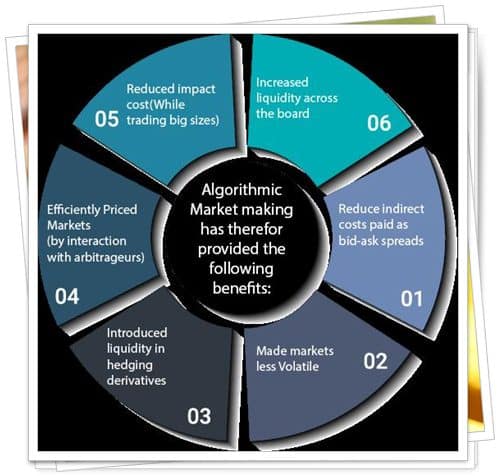
Market makers help investors buy and sell securities. They are a guaranteed counterparty for other traders who want to buy or sell products. Market makers use hedging techniques to offset their position and minimize risk. They buy and sell securities, and if the prices go up or down, they sell them to gain a profit.
If the price of a security is rising, the market maker may hold on to inventory for a long time. This can be risky, as the price of a traded asset can fall drastically when there is no trading activity on the exchange. Market makers may need to use wider bid spreads to mitigate the inventory risk.
Market makers place both buy and sell orders on both sides of the book. In this way, they offer the best prices on the entire exchange. As long as someone comes along with a market order around the market price, the market maker’s buy and sell orders will be filled. However, unlike arbitrage, market making involves assuming that buyers and sellers will be evenly distributed throughout the market.
Market makers may use the average depth of book to determine how often to execute market orders. However, the average order cancellation rate is not always the same as the average depth of book. For example, a market maker may exit the market without cancelling all of the high priority orders, but the remaining high priority orders will not be executed with 90% probability. For example, if the 90 percentile sell market order size is 9000 shares, the market maker would need to cancel only 1000 shares of that order to leave the market without causing a 90% probability of execution.
Market makers should not be afraid to scale back their market-making activities when they encounter skewed order distributions. This is to protect themselves from adverse selection. The spreads incurred by the market maker may increase their impulse threshold. A market maker should not overestimate the profits they can earn from a market-making strategy.
Another risk management strategy is the locking of funds in a limit order. This can lead to a permanent loss in finance. For example, a market maker might use this strategy in order to push the price of bitcoin above $1.10. The market maker might even go higher than $1.15 if the market maker tries to push the price past the $1.10 level.
Market makers aim to capture changes in spreads within and across different markets. However, their strategy is profitable only if the spreads are tight and stable. A market maker may be profitable in a market with tight spreads, but they lose money if they choose the wrong time to sell. A market maker may also lose money in volatile markets.
Market making strategy are similar to sports bookmaking in that they pair punters against each other. The objective is to capture the spreads that result from buys and sells. Market makers also provide liquidity to order books and constantly update the price based on supply and demand. They can also generate signals from the order book and real-time transactions. A common signal is an imbalance bar. This bar appears when the difference between the bid and ask ticks is greater than expected.
Leave a Reply
You must be logged in to post a comment.